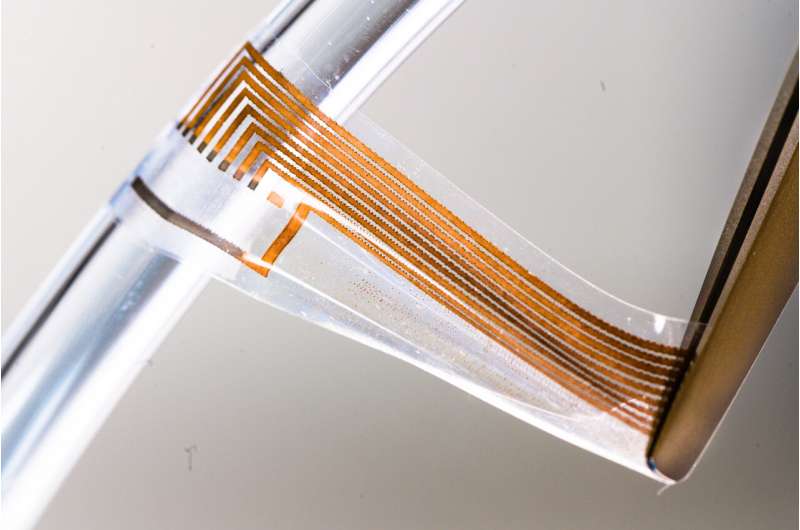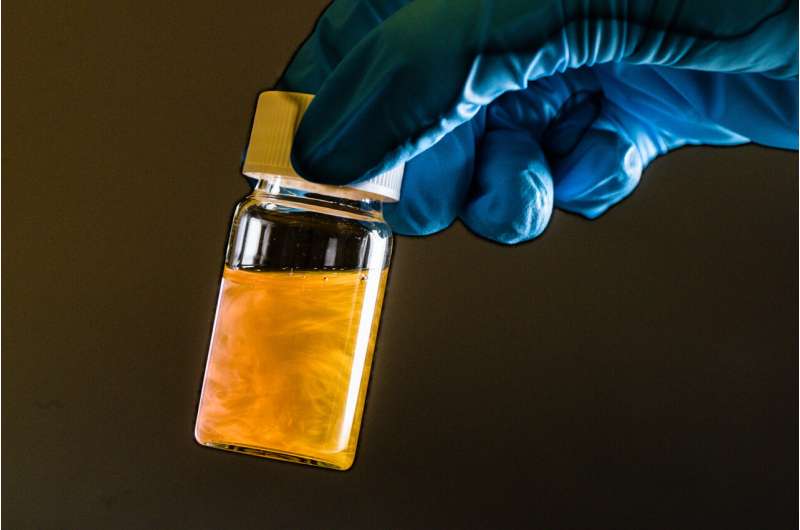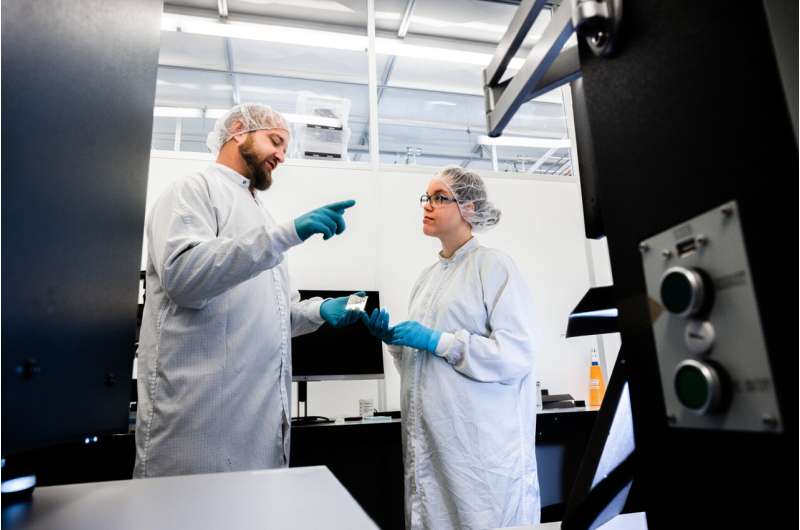This article has been reviewed according to Science X's editorial process and policies. Editors have highlighted the following attributes while ensuring the content's credibility:
fact-checked
peer-reviewed publication
trusted source
proofread
Researchers develop soft gold nanowires for neural interfaces

Gold does not readily lend itself to being turned into long, thin threads. But researchers at Linköping University in Sweden have now managed to create gold nanowires and develop soft electrodes that can be connected to the nervous system. The electrodes are soft as nerves, stretchable and electrically conductive, and are projected to last for a long time in the body.
Some people have a "heart of gold," so why not "nerves of gold"? In the future, it may be possible to use this precious metal in soft interfaces to connect electronics to the nervous system for medical purposes.
Such technology could be used to alleviate conditions such as epilepsy, Parkinson's disease, paralysis or chronic pain. However, creating an interface where electronics can meet the brain or other parts of the nervous system poses special challenges.
"The classical conductors used in electronics are metals, which are very hard and rigid. The mechanical properties of the nervous system are more reminiscent of soft jelly. In order to get an accurate signal transmission, we need to get very close to the nerve fibers in question, but as the body is constantly in motion, achieving close contact between something that is hard and something that is soft and fragile becomes a problem," says Klas Tybrandt, professor of materials science at the Laboratory of Organic Electronics at Linköping University, who led the research.
Researchers therefore want to create electrodes that have good conductivity as well as mechanical properties similar to the softness of the body. In recent years, several studies have shown that soft electrodes do not damage the tissue as much as hard electrodes may do.
In the current study. a group of researchers at Linköping University have developed gold nanowires—a thousand times thinner than a hair—and embedded them in an elastic material to create soft microelectrodes. The paper, "Stretchable tissue-like gold nanowire composites with long-term stability for neural interfaces," is published in the journal Small.

"We've succeeded in making a new, better nanomaterial from gold nanowires in combination with a very soft silicone rubber. Getting these to work together has resulted in a conductor that has high electrical conductivity, is very soft and made of biocompatible materials that function with the body," says Klas Tybrandt.
Silicone rubber is used in medical implants, such as breast implants. The soft electrodes also include gold and platinum, metals that are common in medical devices for clinical use.
However, making long, narrow gold nanostructures is very difficult. This has so far been a major obstacle, but the researchers have now come up with a new way to manufacture gold nanowires. And they do it by using silver nanowires.
As silver has unique properties that make it a very good material to create the kind of nanowires that the researchers are after, it is used in some stretchable nanomaterials. The problem with silver is that it is chemically reactive. In the same way that silver cutlery will discolor over time when chemical reactions occur on the surface, silver in nanowires breaks down so that silver ions leak out. At a high enough concentration, silver ions can be toxic to us.

It was when Laura Seufert, a doctoral student in Klas Tybrandt's research group, was working on finding a way to synthesize, or "grow," gold nanowires that she came up with a new approach that opened up new possibilities.
At first, it was difficult to control the shape of the nanowires. But then she discovered a way that resulted in very smooth wires. Instead of trying to grow gold nanowires from the beginning, she started with a thin nanowire made of pure silver.
"As it's possible to make silver nanowires, we take advantage of this and use the silver nanowire as a kind of template on which we grow gold. The next step in the process is to remove the silver. Once that's done, we have a material that has over 99 percent gold in it. So it's a bit of a trick to get around the problem of making long narrow gold nanostructures," says Klas Tybrandt.
In collaboration with Professor Simon Farnebo at the Department of Biomedical and Clinical Sciences at Linköping University, the researchers behind the study have shown that the soft and elastic microelectrodes can stimulate a rat nerve as well capture signals from the nerve.
In applications where the soft electronics are to be embedded in the body, the material must last for a long time, preferably for life. The researchers have tested the stability of the new material and concluded that it will last for at least three years, which is better than many of the nanomaterials developed so far.
The research team is now working on refining the material and creating different types of electrodes that are even smaller and can come into closer contact with nerve cells.
More information: Laura Seufert et al, Stretchable Tissue‐Like Gold Nanowire Composites with Long‐Term Stability for Neural Interfaces, Small (2024). DOI: 10.1002/smll.202402214
Journal information: Small
Provided by Linköping University





















